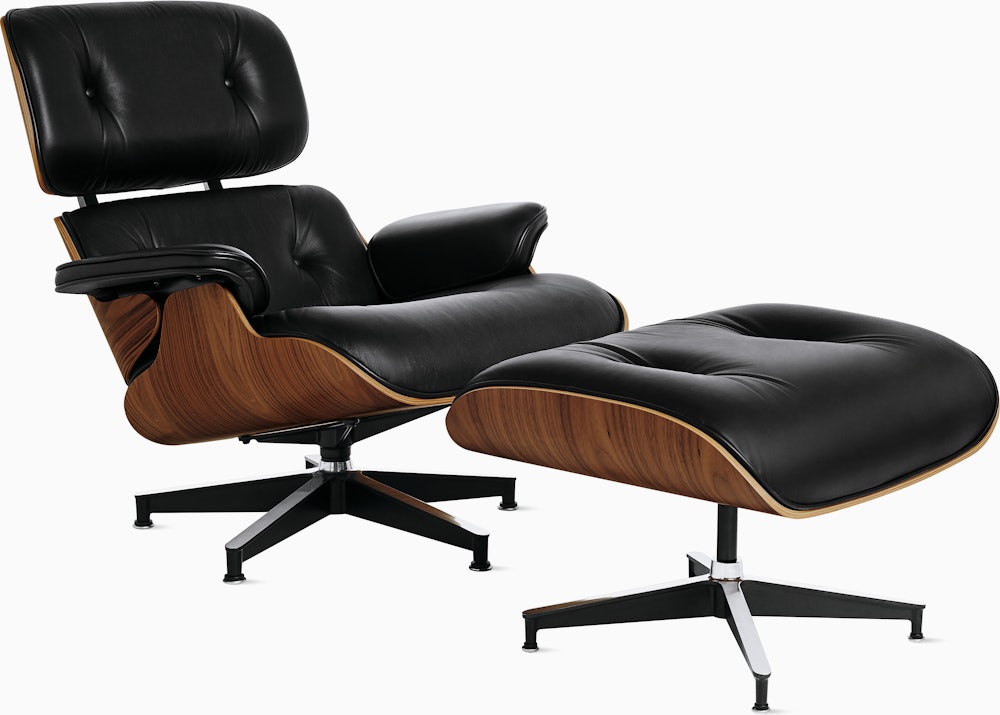The Bauhaus movement is a German design philosophy that emerged after the First World War. Originating as a response to the artless engineering of the European war machine, this movement aimed to integrate art, design, and engineering into a “socially oriented” viewpoint, embracing the idea that engineers and artists are one and the same. Members of the Bauhaus movement were both classically trained artists and had hands-on experience with craftsmen and tradesmen, receiving a holistic education in visual arts, sculpture, woodworking, and even architecture [1]. Below is a depiction of the Bauhaus Institute building, serving as a phenomenal example of the design philosophy in practice.

 [4]
[4]

The above chair was inspired by the work of Wassily Kandinsky, a printmaker who specialized in lithography and was one of the aforementioned artists who taught at the Bauhaus Institute. During his tenure, he created a painting called “Orange,” an abstract piece comprised of geometric shapes, colors, and simple lines. It is my all-time favorite print.

Plywood bending is another manufacturing method that dramatically rose in popularity through the Bauhaus movement. Layers of wood are soaked in water and then pressed into organic shapes. The epitome of this production method is the Eames armchair. This piece of furniture was heavily inspired by the Bauhaus movement but is technically more of a modernist work.

Bauhaus is functional. This aesthetic is meant to be used, to be lived with, to be experienced, to be enjoyed en masse. Contrary to that, in the last few years, Bauhaus pieces have moved from their humble beginnings of mass production to luxury goods that cost thousands to tens of thousands of dollars. The previously mentioned Eames chair is now sold for over seven thousand dollars. However, today you can still see the Bauhaus movement all over the US through IKEA. The Swedish company employs many of the same design principles that made the Bauhaus movement so successful. The below photo is of a 1972 IKEA armchair and sofa that use the same bent tube structure and stretched textiles that Breuer used half a century prior.
 [7]
[7]
References:
[1] Casciato, Maristella, Gary Fox, and Katherine Rochester. Bauhaus, June 10, 2019. https://www.getty.edu/research/exhibitions_events/exhibitions/bauhaus/new_artist/history/. [2] Wilder, Charly. “On the Bauhaus Trail in Germany.” The New York Times, August 10, 2016. https://www.nytimes.com/2016/08/14/travel/bauhaus-germany-art-design.html. [3] “10 Bauhaus Principles That Still Apply Today.” ART, July 18, 2021. https://art.art/blog/10-bauhaus-principles-that-still-apply-today. [4] “Original Design: The Cesca Chair.” Knoll, April 9, 2021. https://www.knoll.com/story/shop/original-design-the-cesca-chair. [5] Kandinsky, Wassily. “MOMA | The Collection | Wassily Kandinsky. Orange. 1923.” MOMA. Accessed January 25, 2024. https://www.moma.org/s/ge/collection_ge/object/object_objid-70099.html. [6] “Eames Lounge Chair and Ottoman.” Herman Miller. Accessed January 24, 2024. https://store.hermanmiller.com/living-room-furniture-lounge-chairs-ottomans/eames-lounge-chair-and-ottoman/5667.html?lang=en_US. [7] “Read About 1972 Armchair and Sofa KULING – IKEA Museum.” IKEA Museum. Accessed January 24, 2024. https://ikeamuseum.com/en/explore/product-stories/kuling-armchair-sofa-1972/.


2 Comments. Leave new
It was a pleasant surprise to learn that IKEA implements a lot of design elements inspired by Bauhaus, which explains why the example pieces felt oddly familiar to me, even though I have not heard of the Bauhaus aesthetic before. I really enjoyed learning about the motivation behind the movement and how the simple, bent elements of Bauhaus works reflects them. Is Bauhaus typically reflected in furniture pieces, or does it show up in many other forms of art, such as the painting, “Orange”?
Hi Helen! I personally really enjoy furniture which is why I focused on those pieces in my blog post, but the Bauhaus movement is by no means limited to that field. The Bauhaus aesthetic can be used in nearly any art medium, with other prominent examples like lithography, photography, sculpture, textiles, and architecture. One major way the movement was brought to the public eye was through the Bauhaus Katalog which showcased a full range of this variety of art forms. Though of course, furniture was one of the primary focuses of this publication.